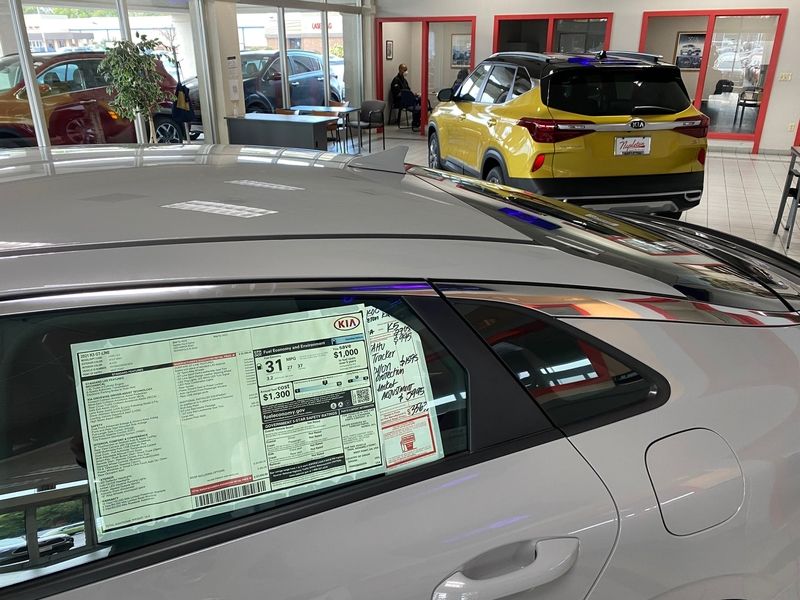
Hyundai, Kia and Genesis, behind light trucks and robust retail demand, posted sharply higher U.S. light-vehicle sales last month compared with April 2020, when the market bottomed out early in the pandemic and showrooms and factory floors were mostly shuttered.
Hyundai Group, the parent of all three brands, has been largely untouched by a chronic shortage of semiconductors that has curtailed light-vehicle production worldwide, allowing the company to rebound strongly more than a year into the coronavirus outbreak.
A 146 percent rise in retail volume drove an overall gain of 128 percent at Hyundai, with total April deliveries of 77,523, the second straight monthly record for the company. Fleet shipments dropped 27 percent and represented just 3 percent of April sales, the company said.
A Hyundai Motor America spokesman said Saturday U.S. dealers had 123,046 cars and light trucks in stock at the end of April, down 13 percent from 141,425 when March closed.
April volume jumped 121 percent to 70,177 at Kia, the company’s second consecutive monthly record, and 309 percent at Genesis, with the GV80 SUV continuing to outsell combined volume of the luxury brand’s three sedans.
Two cars – the new K5, a replacement for the Optima, and the Forte – set monthly sales records, and three crossovers — Telluride, Sportage and Seltos — set highs for April volume, Kia said Saturday.
“Given the showroom traffic our dealers are reporting ahead of the summer opening of the country we are confident our strong performance will continue through the year,” Sean Yoon, CEO of Kia Motors America, said in a statement.
Toyota Motor Corp., Honda Motor Co., Mazda, Subaru and Volvo are expected to report April U.S. results on Monday, followed by Ford Motor Co. on Tuesday. The rest of the industry reports U.S. sales on a quarterly basis.
U.S. auto sales are forecast to nearly double last month to more than 1.3 million, according to analysts at J.D. Power, Cox Automotive and TrueCar, with strong retail demand continuing to drive volume, even as supply disruptions undercut volume.
The market bottom came early in the pandemic, with the seasonally adjusted, annualized rate of sales falling to 8.6 million in April 2020. The sales pace has steadily risen, and in a sign of the market’s strength, the SAAR could top 18 million for the second straight month in April, J.D. Power and LMC said.
Other analysts see the SAAR coming in at 16.5 million or more, with the final figure likely dependent on vehicle availability. Chronically tight semiconductors supplies have idled auto factories worldwide, crippling dealer stockpiles.
Dealers and analysts say new-vehicle sales lost momentum late in the month as supplies continued to shrink.
Cox Automotive said light-vehicle supplies fell by more than 1.25 million units during the month, a significant setback for an industry that counts on robust spring sales.
“The market is being driven by inventory right now, not incentives, and it is only getting worse as the chip shortage continues,” said Brian Finkelmeyer, senior director of new-vehicle sales strategy at Cox Automotive. “Most dealers are scrambling to secure inventory in any way they can. Those who aren’t paying close enough attention are losing out to those who are managing it more efficiently.”
Dealers are selling a larger share of vehicles almost as soon as they arrive in inventory. In the first ten days of April, J.D. Power said nearly one-third of vehicles were purchased within 10 days of arriving at a store, up from one-fourth of vehicles that were sold within 10 days in April 2019.
Charlie Chesbrough, senior economist for Cox Automotive, says the industry’s average days supply of vehicles — 65 in an ideal market — is on track to fall into the 30s soon.
Inventories are tightest – a 40-day supply or less – among large trucks and SUVS, midsize trucks, minivans and luxury SUVs, according to Cox Automotive data.
“There is little reason to expect buyer interest to wane anytime soon given recent economic growth rate expectations and improvements to consumer sentiment,” Chesbrough said. “But inventory is a huge problem in the vehicle market.”
Discounts continue to fall as new-vehicle stockpiles dwindle. Average incentive spending per unit in April is expected to fall to $3,191, down from $4,953 in April 2020 and $3,573 in April 2019, J.D. Power estimates. TrueCar forecasts incentives will fall 28 percent to $3,191 in April. (See chart below.)
Falling discounts, tight supplies, strong consumer demand and an economy flush with cash from government stimulus programs have become a recipe for higher transaction prices. J.D Power estimates average transaction prices will rise 6.7 percent in April to $37,572, a high for the month, and the second-highest level after December 2020, when prices averaged $37,966.
- There were 26 selling days last month, the same as April 2020.
- The average number of days a new vehicle sat on a dealer lot before being sold was on pace to fall to 50 days in April, down 34 days from a year ago, J.D. Power estimates.
- Average incentive spending per unit on trucks and SUVs combined is expected to tally $3,173 last month, down $1,989 from a year earlier and off $445 from 2019, J.D. Power said. The average discount on cars is expected to be $3,219 in April, down $1,049 from a year earlier and a decline of $247 from April 2019.
- The average interest rate for new-vehicle loans in April was on track to increase 46 basis points to 4.3 percent from a year ago, J.D. Power forecast, and the first year-over-year increase since July 2019.
- Fleet deliveries are expected to total 154,400 in April, a gain of 81 percent from April 2020 and down 44 percent from April 2019. Fleet volume is expected to account for 10 percent of total light-vehicle sales in April, down from12 percent a year earlier, J.D. Power said.

